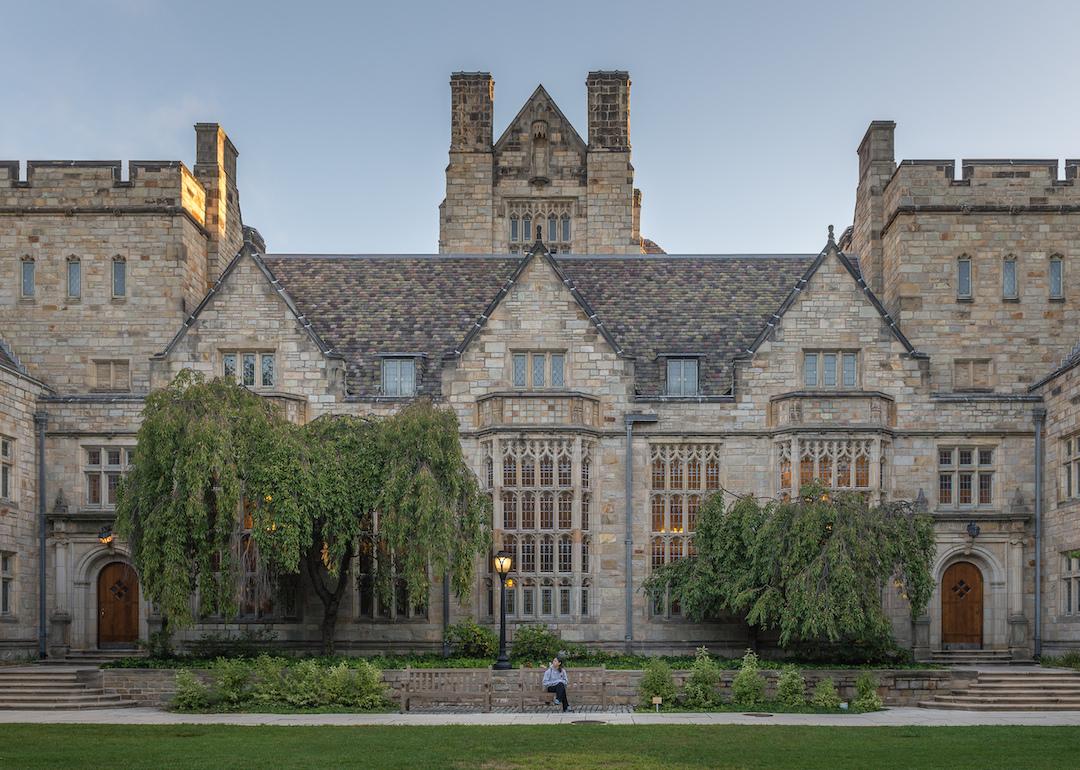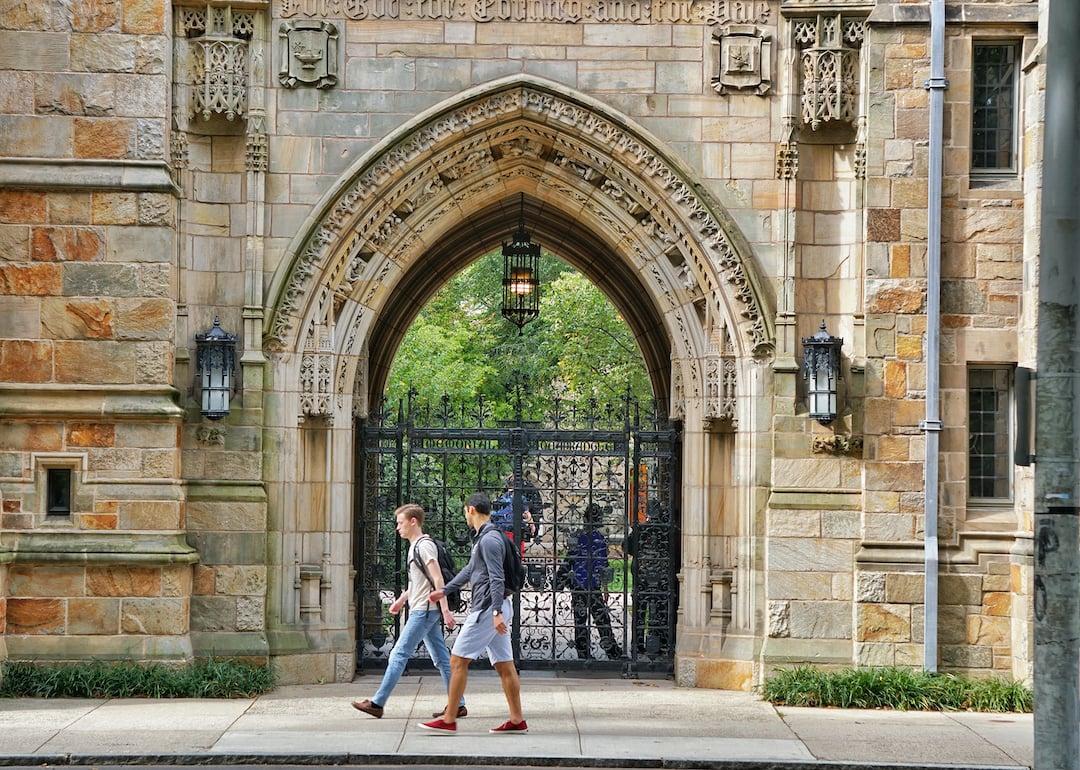
Hardest college to get into in your state
It's conventional wisdom that having a college education can be an enormous advantage in terms of furthering your career—and the data backs that up. With a college degree, you're more likely to make a higher salary, have improved health and retirement benefits, and find better career opportunities overall. Attending an especially selective school is considered an even greater advantage, affording prospective graduates opportunities others simply may not have, including higher lifetime earnings and important networking connections.
However, because tuition prices keep rising, a degree from a school with a high rate of post-degree employment can also entail some serious student debt.
Some coastal states, such as Massachusetts and New York, have multiple highly selective colleges. For instance, the Massachusetts Institute of Technology and Columbia University both accepted less than 5% of applicants for the 2025-2026 school year, according to data obtained by Forbes in March 2025. Other states, such as Utah and Arizona, have (by comparison) no highly selective schools. For instance, Brigham Young University, the most selective school in Utah, accepts 69% of students who apply. Arizona's most selective college, Ottawa University at Surprise, takes about 40% of applicants.
Though countless factors go into college admissions decisions, standardized testing scores may have played an especially significant role this year. After many universities dropped testing requirements from applications during the COVID-19 pandemic, some institutions—mostly Ivy League schools, like Yale University and Dartmouth College—have reinstated standardized test score requirements for applicants.
The return of standardized testing is one of the many ongoing conversations surrounding college admissions. After the Supreme Court overturned affirmative action in June 2023, ending the long-held practice of race-based admissions, schools like Harvard and the Massachusetts Institute of Technology saw a steep decline in enrollment among Black freshmen. A July 2025 analysis from the Urban Institute confirmed this trend, finding that although the number of Black and Latino college applicants increased from 2023 to 2024, fewer students from these demographics were accepted. Needless to say, the effects of the Supreme Court's decision will continue to reverberate across college admissions offices for many years to come.
In the meantime, we're breaking down the most selective colleges across the country. To determine which schools in each state are the most difficult to get into, Stacker combed through Niche's 2026 hardest colleges to get into rankings. Niche ranked the college's selectivity based on acceptance rates and SAT scores, using data from both the Department of Education and self-reported scores by Niche users. There were no colleges in Niche's ranking from Alaska, Delaware, Nevada, Utah, West Virginia, and Wyoming.
Click through to the list to see the most selective schools in each state and to find out just how hard you'll need to hit that SAT prep book.
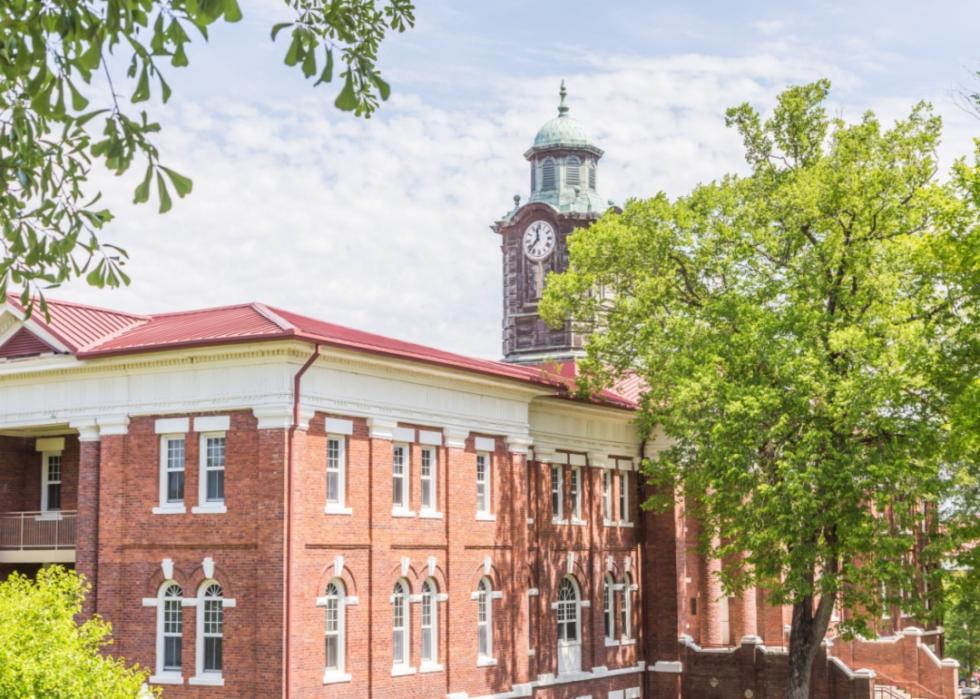
Alabama: Tuskegee University
- Location: Tuskegee, AL
- Acceptance rate: 31%
- #103 hardest college to get into nationwide
- Overall Niche grade: B
- Typical SAT range: 1000-1260
Founded in 1881, Tuskegee's historic mission combines a strong professional and liberal-arts curriculum with specialized programs. It remains one of the nation's leading historically Black colleges and universities for producing Black graduates in STEM and veterinary medicine. The university's compact student-faculty ratios and targeted degree programs create hands-on learning opportunities for students pursuing science and technical careers. Altogether, Tuskegee has long been an attractive choice for students who want both cultural heritage and career-focused training.
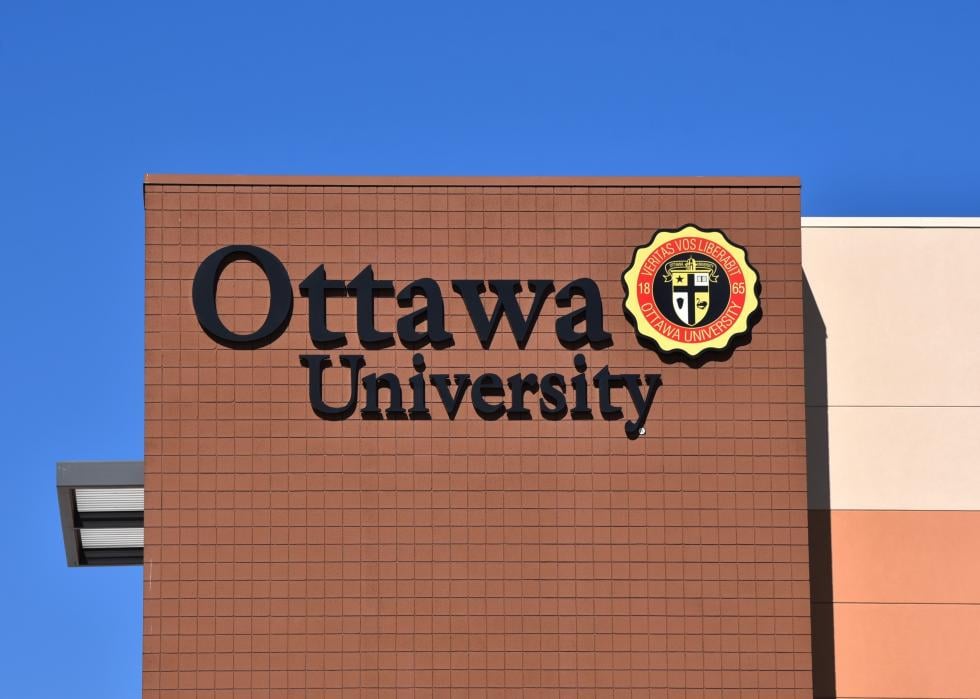
Arizona: Ottawa University - Surprise
- Location: Surprise, AZ
- Acceptance rate: 40%
- #137 hardest college to get into nationwide
- Overall Niche grade: C-
- Typical SAT range: 910-1050
The Ottawa University campus in Surprise features state-of-the-art academic, sports, and residential facilities. The original institution was founded in 1865 in Ottawa, Kansas, following an agreement between Native Americans—who lived in the area that would become the city —and Baptist missionaries. OUAZ offers strong athletic programs and personalized education delivered through individual student success coaches.

Arkansas: Harding University
- Location: Searcy, AR
- Acceptance rate: 45%
- #174 hardest college to get into nationwide
- Overall Niche grade: A-
- Typical SAT range: 1050-1280
Harding University emphasizes a Christian liberal-arts education with small classes and a mentorship culture, reporting low student-faculty ratios and personalized academic advising. The university has invested in student success resources and an Honors College to support both high-achieving students and leadership development. Harding highlights experiential learning, religious service, and campus community as being central to its mission of combining faith with academic rigor.

California: California Institute of Technology
- Location: Pasadena, CA
- Acceptance rate: 3%
- #1 hardest college to get into nationwide
- Overall Niche grade: A+
- Typical SAT range: 1530-1580
Caltech is a world-class research institute with small student cohorts and an emphasis on close faculty-student collaboration that accelerates learning and innovation. The institute's research output, along with its interdisciplinary centers in areas such as quantum science, engineering, biosciences, and space science, positions students alongside faculty who are at the forefront of significant breakthroughs. The institution's esteemed reputation for cultivating leaders in the fields of science and engineering paves the way for students to access prestigious graduate programs and prominent industry roles that translate into real-world impact.

Colorado: United States Air Force Academy
- Location: Air Force Academy, CO
- Acceptance rate: 14%
- #50 hardest college to get into nationwide
- Overall Niche grade: A
- Typical SAT range: 1250-1450
The United States Air Force Academy integrates a demanding STEM-focused core curriculum with professional military training, equipping graduates for leadership roles in air, space, and cyberspace operations. USAFA provides a wide array of majors along with leadership development, physical training, and service commitments that prepare students for commissioned service and technical professions. Cadets have access to faculty research, military laboratories, and mission-driven projects, offering practical experience that is often absent from civilian educational institutions.
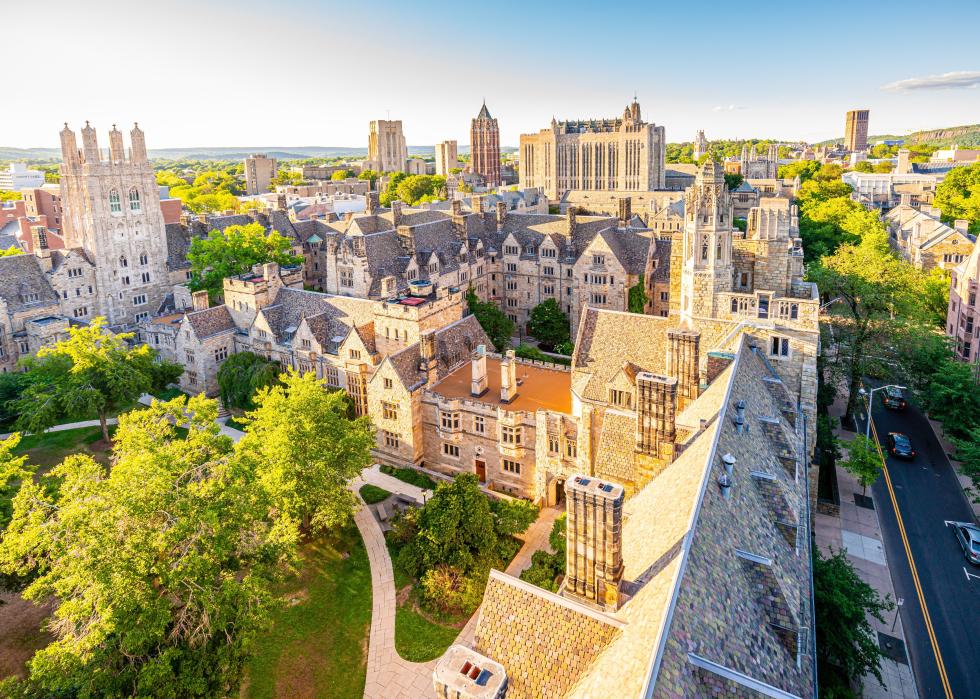
Connecticut: Yale University
- Location: New Haven, CT
- Acceptance rate: 5%
- #7 hardest college to get into nationwide
- Overall Niche grade: A+
- Typical SAT range: 1500-1580
Yale University is the fourth-oldest institution of higher learning in the United States. It is well-known for its drama, history, music, and economics programs, as well as for its law school. The university boasts an impressive number of famous alumni, including five U.S. presidents, along with numerous Supreme Court justices and heads of state. Its student-to-faculty ratio is a mere 6:1.
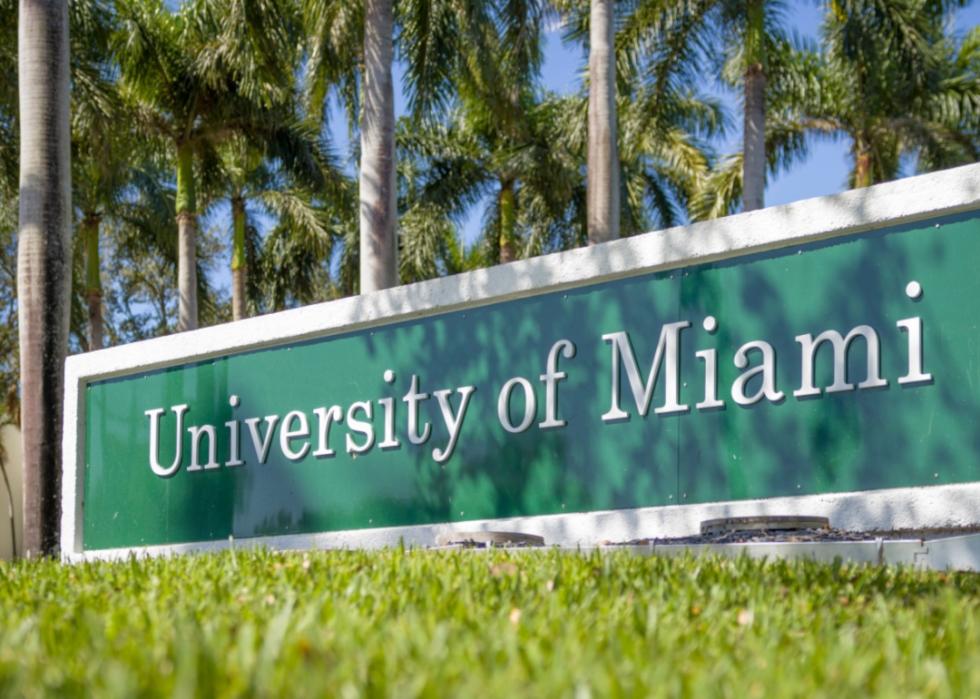
Florida: University of Miami
- Location: Coral Gables, FL
- Acceptance rate: 19%
- #64 hardest college to get into nationwide
- Overall Niche grade: A+
- Typical SAT range: 1330-1470
Situated in vibrant Coral Gables, the University of Miami is a private institution focused on research. It provides students with robust interdisciplinary programs in fields such as medicine, marine science, business, and law. The university's extensive size and resources facilitate on-campus research laboratories, clinical placements, and undergraduate research opportunities that enhance career preparedness. The diverse student population at UM, combined with its Miami metro location, offers significant cultural, internship, and networking benefits for students.
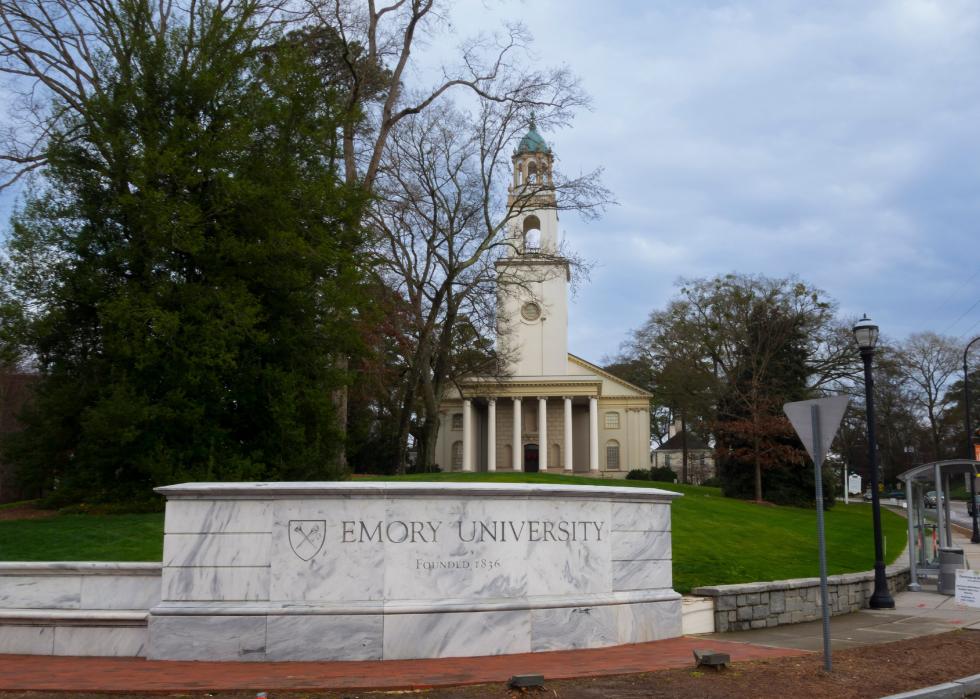
Georgia: Emory University
- Location: Atlanta, GA
- Acceptance rate: 11%
- #34 hardest college to get into nationwide
- Overall Niche grade: A+
- Typical SAT range: 1460-1550
Nine schools make up Emory University, the second-oldest private higher education institution in Georgia. Its most prestigious academic division is the School of Medicine, linked to Emory Healthcare, the largest academically based medical system in the state. More than 1,100 students are split across medical and health professional tracks, and the university also provides residency training to more than 1,400 residents and fellows across 120 training programs.
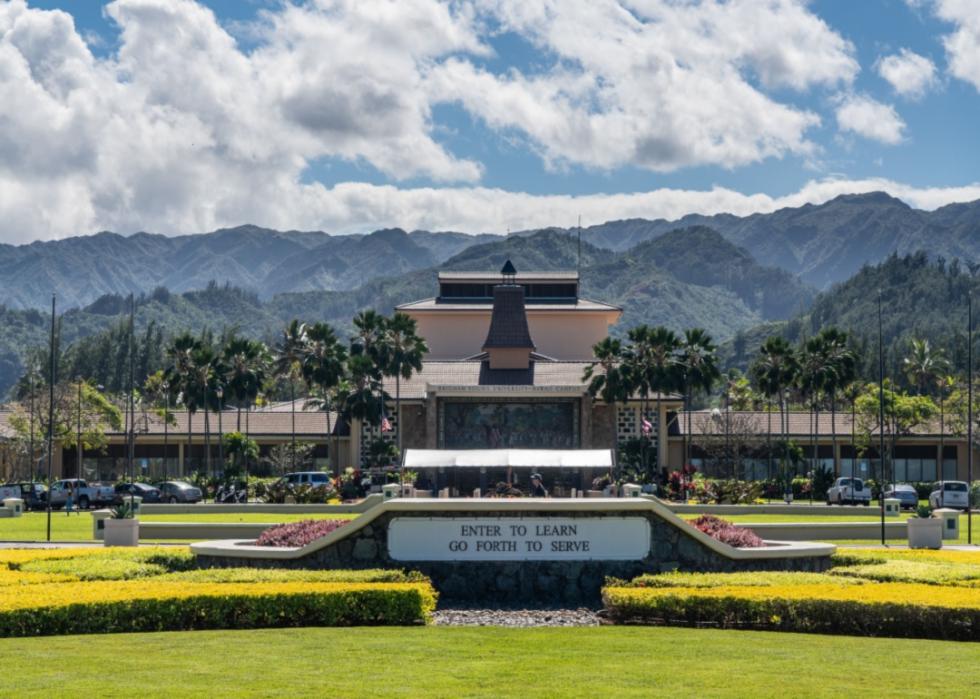
Hawai'i: Brigham Young University–Hawaii
- Location: Laie, HI
- Acceptance rate: 38%
- #129 hardest college to get into nationwide
- Overall Niche grade: B
- Typical SAT range: 990-1190
Brigham Young University–Hawaii provides an education driven by its mission, integrating spiritual growth with academic pursuits, and placing a strong focus on cross-cultural leadership throughout the Asia-Pacific region. The university's reduced tuition, supported by the sponsoring Mormon church, along with its work-study program, renders it a cost-effective option for students. The university's distinctive ideals and geographical setting allow for unique global networking and service opportunities for those who attend.

Idaho: The College of Idaho
- Location: Caldwell, ID
- Acceptance rate: 47%
- #184 hardest college to get into nationwide
- Overall Niche grade: B-
- Typical SAT range: 1080-1270
The College of Idaho takes pride in the honors obtained by its alumni, who include eight Rhodes Scholars, three state governors, and one Pulitzer Prize winner, among other accolades. The 134-year-old school has evolved from a single classroom with two pupils at a Presbyterian church to a reputable college with an annual enrollment exceeding 1,000 students.
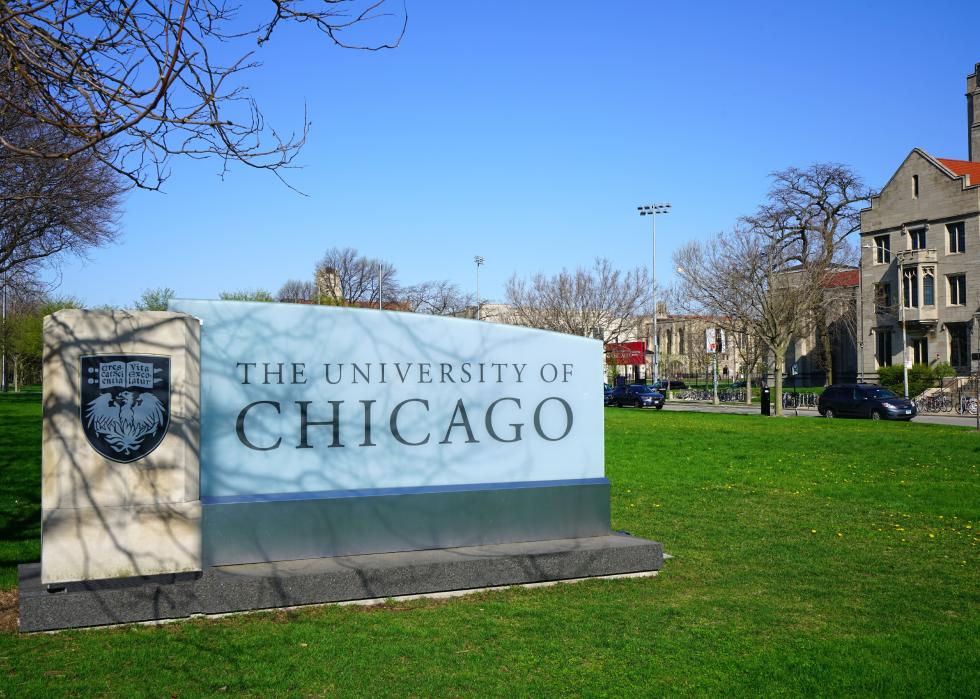
Illinois: University of Chicago
- Location: Chicago, IL
- Acceptance rate: 5%
- #8 hardest college to get into nationwide
- Overall Niche grade: A+
- Typical SAT range: 1510-1570
The University of Chicago boasts a low student-to-teacher ratio (5:1) as well as an affiliation with 101 Nobel laureates, 34 MacArthur "genius grant" fellows, and 23 Pulitzer Prize winners. This includes Saul Bellow and Thornton Wilder, the latter of whom won on three occasions. The school is proud of its nationally recognized medical and law programs.
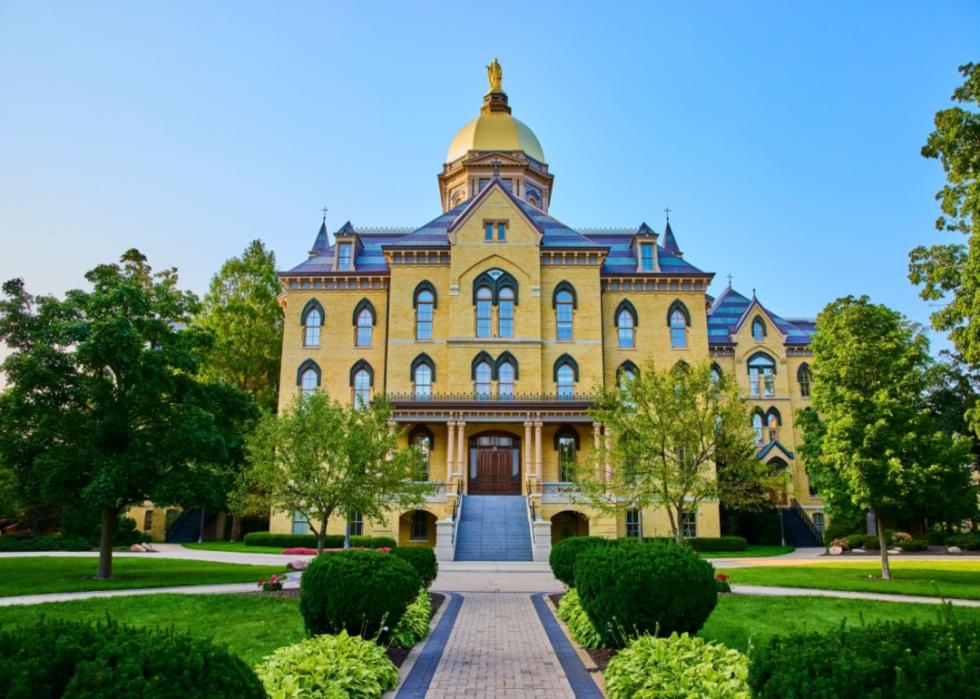
Indiana: University of Notre Dame
- Location: Notre Dame, IN
- Acceptance rate: 12%
- #42 hardest college to get into nationwide
- Overall Niche grade: A+
- Typical SAT range: 1440-1540
This research-oriented Catholic institution is consistently recognized as one of the top schools in the country. The University of Notre Dame is situated on a sprawling 1,250-acre campus with a park-like landscape. Popular majors at this university include finance, neuroscience, and economics.
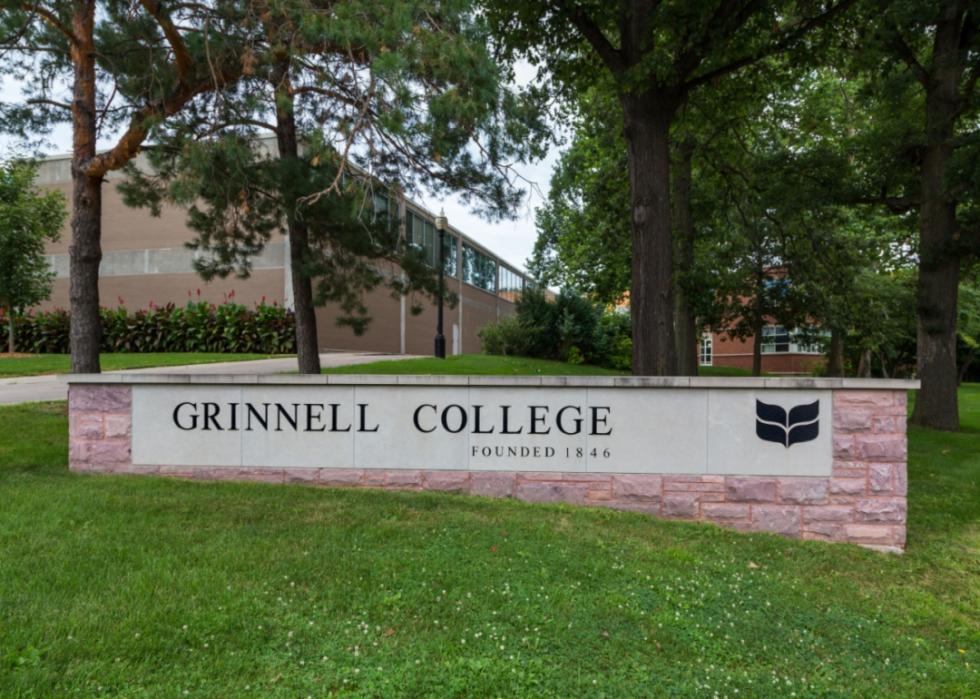
Iowa: Grinnell College
- Location: Grinnell, IA
- Acceptance rate: 13%
- #43 hardest college to get into nationwide
- Overall Niche grade: A
- Typical SAT range: 1420-1550
Grinnell has one of the biggest endowments among liberal arts colleges in the country. Students are not required to take general education classes. Instead, through the Individually Advised Curriculum, Grinnellians are free to explore their passions without feeling obligated to study subjects they don't enjoy.
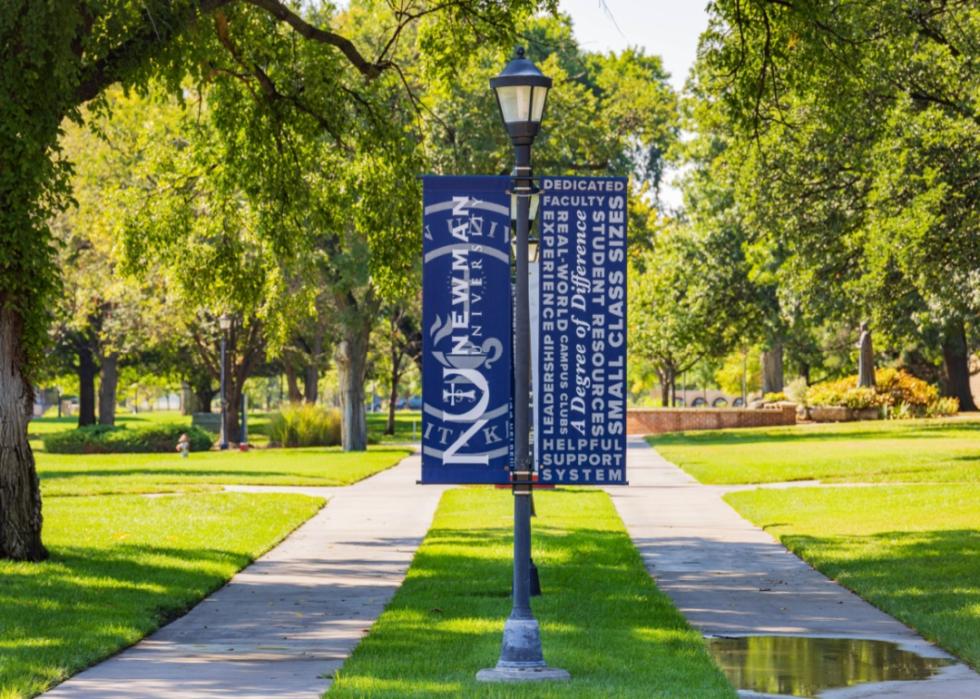
Kansas: Newman University
- Location: Wichita, KS
- Acceptance rate: 48%
- #188 hardest college to get into nationwide
- Overall Niche grade: B
- Typical SAT range: 990-1190
Newman University is a Catholic institution that focuses on holistic education, which integrates faith, professional preparation, and community engagement. It also boasts small classes and student support services. The university emphasizes career readiness and practical experience through internships, accelerated programs, and partnerships with local employers in Wichita. Both Newman's liberal arts foundation and professional programs—which include education, nursing, and business—aim to prepare graduates for the outside world.
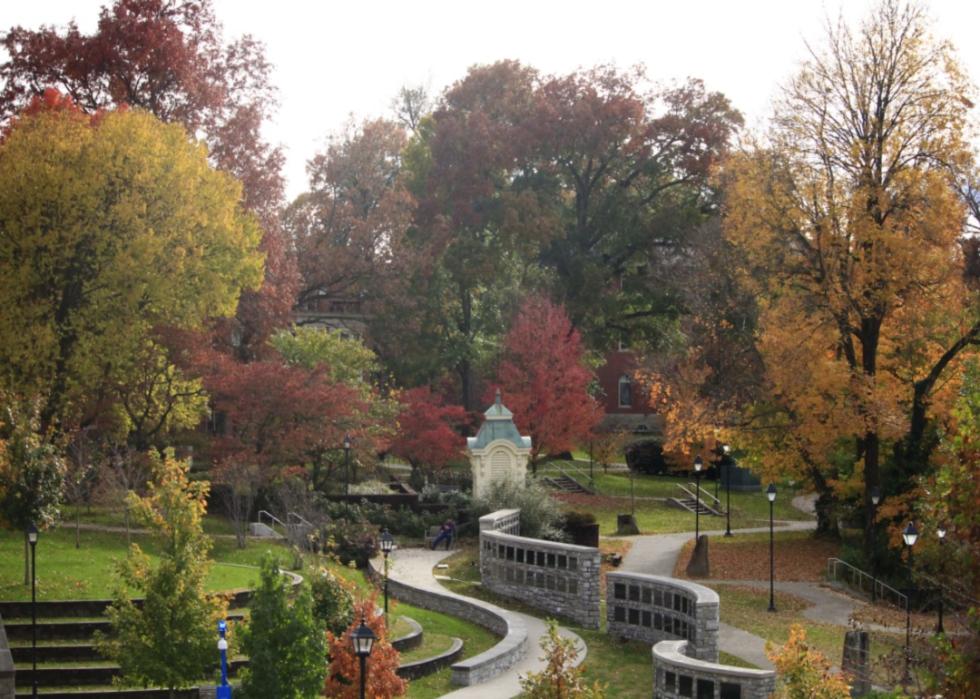
Kentucky: Berea College
- Location: Berea, KY
- Acceptance rate: 33%
- #108 hardest college to get into nationwide
- Overall Niche grade: B+
- Typical SAT range: 1160-1340
Berea College is unique among U.S. higher education institutions for offering a tuition-free education to all admitted students through its work-college model, dramatically reducing student debt while providing practical work experience. Small class sizes and a community ethos foster strong faculty mentoring and close peer collaboration. Berea's model is attractive to any student who wants affordability without sacrificing a high-quality liberal-arts education.
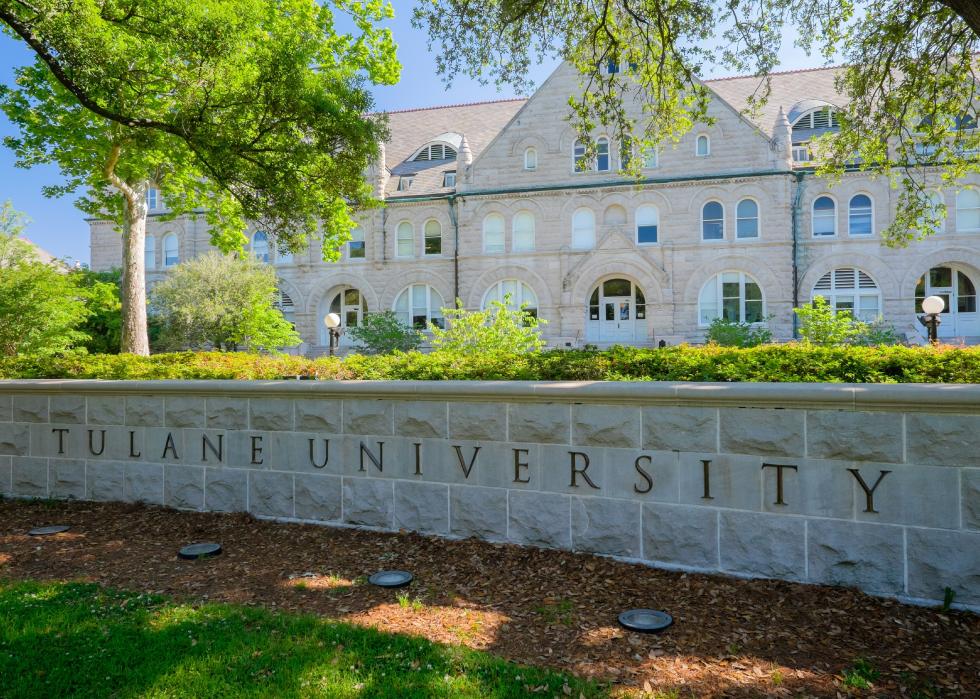
Louisiana: Tulane University
- Location: New Orleans, LA
- Acceptance rate: 15%
- #53 hardest college to get into nationwide
- Overall Niche grade: A+
- Typical SAT range: 1390-1510
Tulane University attracts a student body from all over the country, with 85% of its students coming from more than 300 miles away. It also claims some notable alumni, including 18 Rhodes Scholars and multiple members of Congress. The university requires all students to complete two semesters of public service learning through various programs.
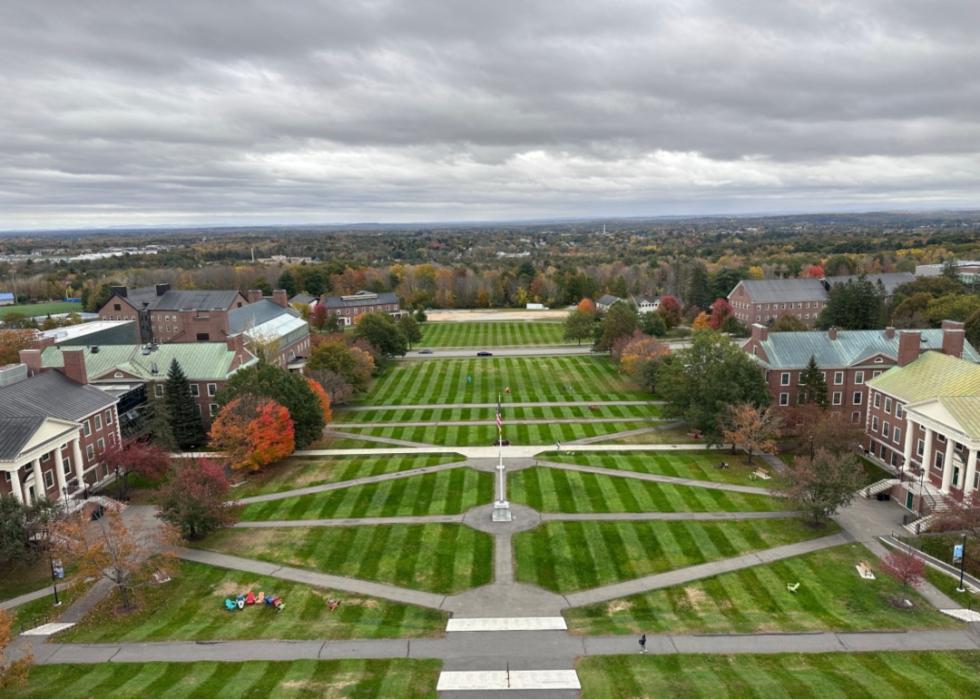
Maine: Colby College
- Location: Waterville, ME
- Acceptance rate: 7%
- #17 hardest college to get into nationwide
- Overall Niche grade: A
- Typical SAT range: 1440-1550
Colby is a highly selective liberal-arts college that combines rigorous academics with extensive research and experiential learning opportunities, including fieldwork, internships, and global programs. In addition to hands-on learning, Colby emphasizes undergraduate research, as well as funding and advising to help students undertake independent projects and pursue competitive graduate and professional placements.
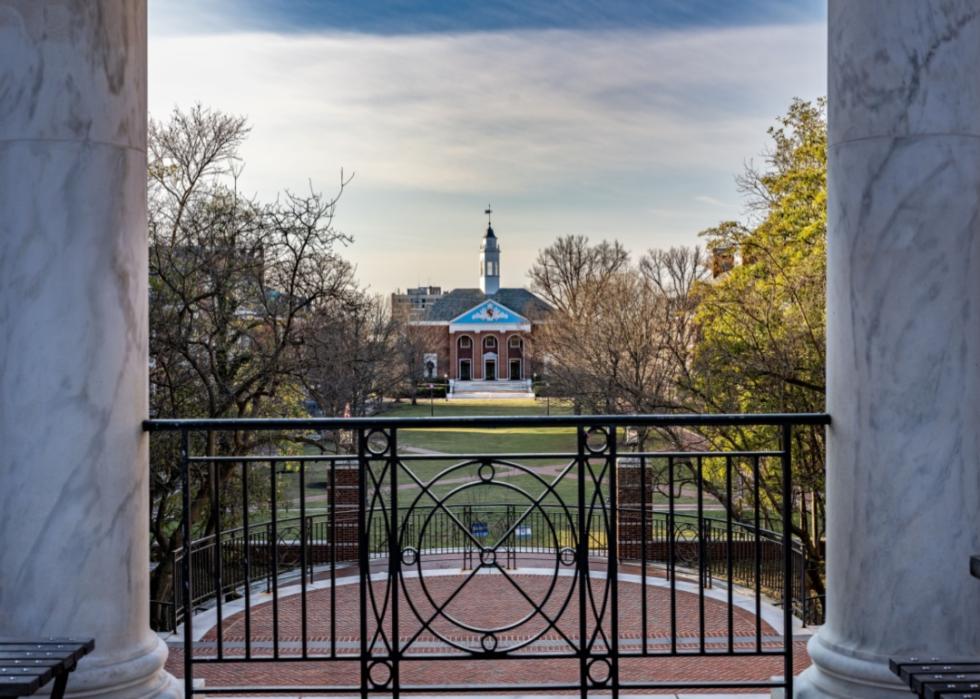
Maryland: Johns Hopkins University
- Location: Baltimore, MD
- Acceptance rate: 8%
- #20 hardest college to get into nationwide
- Overall Niche grade: A+
- Typical SAT range: 1530-1580
Considered the first research university in the country, Johns Hopkins University leads all schools in terms of money spent on research and development, spending $3.8 billion in 2023. The most popular majors include public health, bioengineering/biomedical engineering, and neuroscience. Its school of medicine is well-ranked, and 80% of pre-med students are admitted to a medical school within five years of graduating.
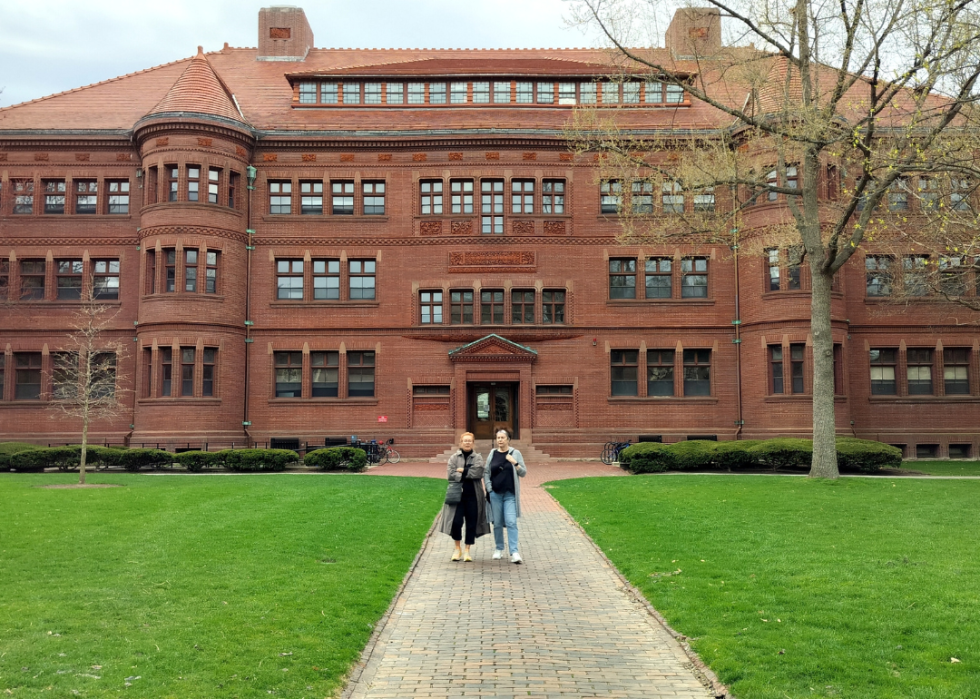
Massachusetts: Harvard University
- Location: Cambridge, MA
- Acceptance rate: 3%
- #2 hardest college to get into nationwide
- Overall Niche grade: A+
- Typical SAT range: 1500-1580
Globally known as one of the most prestigious of America's Ivy League schools, Harvard University was founded 140 years before the U.S. became a country. It is the second-most selective school in the country, according to Niche. Its alumni include eight U.S. presidents, several hundred Rhodes Scholars, and over 100 billionaires, more than Stanford, Yale, and MIT. The most popular undergraduate major at Harvard is economics.
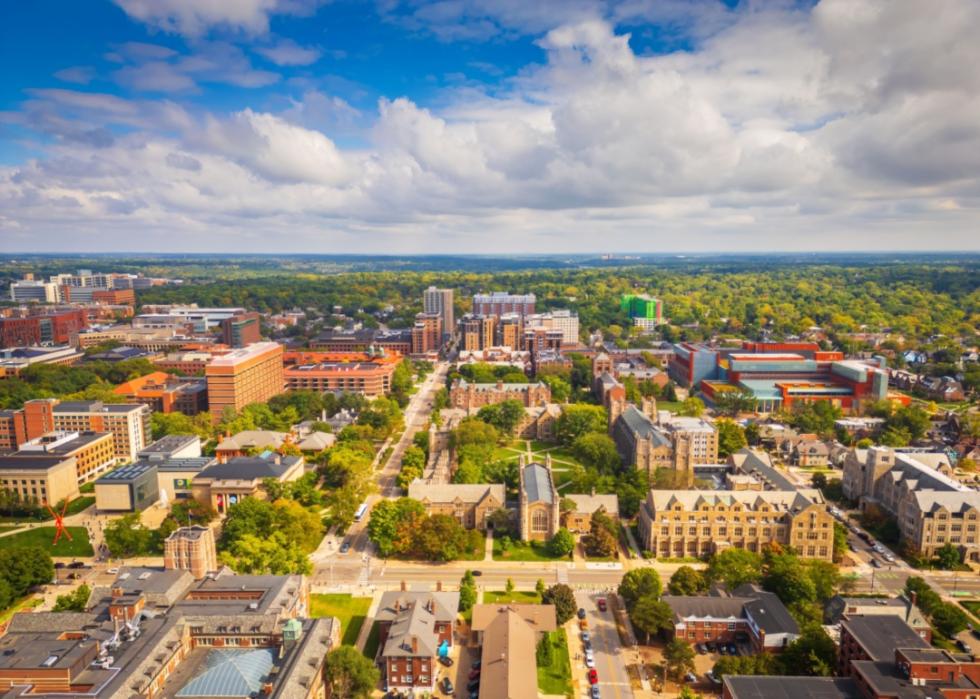
Michigan: University of Michigan - Ann Arbor
- Location: Ann Arbor, MI
- Acceptance rate: 18%
- #63 hardest college to get into nationwide
- Overall Niche grade: A+
- Typical SAT range: 1350-1530
The founding of this public university in 1817 preceded Michigan's statehood by two decades. The University of Michigan is located in Ann Arbor, notorious for being an exceptional college town. The institution has become increasingly selective in recent years: The school's acceptance rate is down to 18%, formerly 26% for the class of 2024.
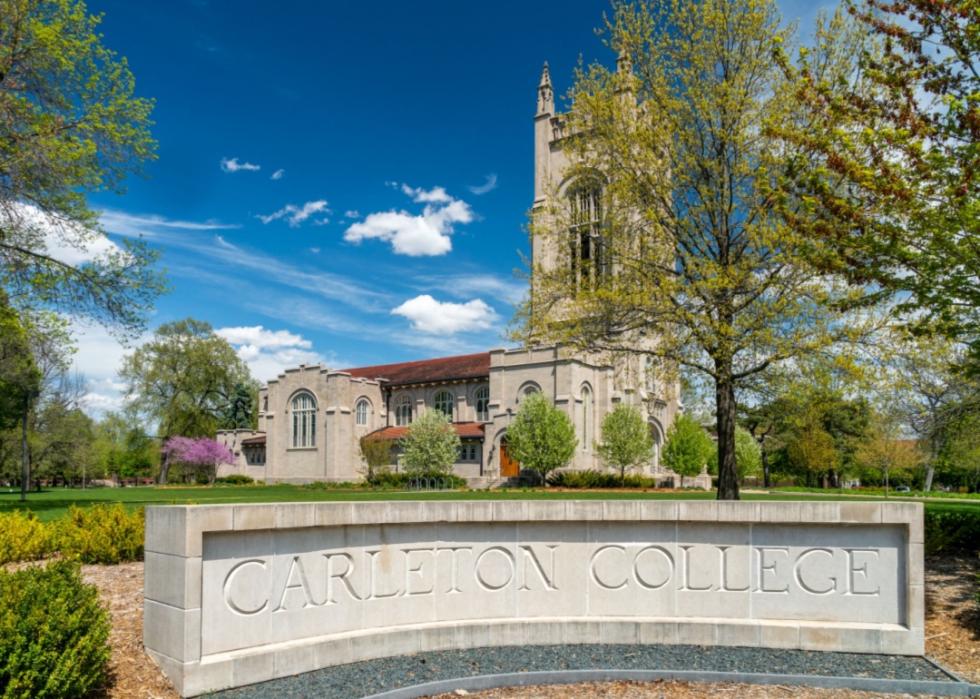
Minnesota: Carleton College
- Location: Northfield, MN
- Acceptance rate: 22%
- #75 hardest college to get into nationwide
- Overall Niche grade: A
- Typical SAT range: 1430-1550
At Carleton College, a small private liberal arts school, the average student-to-faculty ratio is 9:1, with 67% of classes having fewer than 20 students. The most popular majors at this university include computer science and biology. Carleton's notable alumni include politicians, journalists, scientists, and writers.

Mississippi: Alcorn State University
- Location: Alcorn State, MS
- Acceptance rate: 25%
- #85 hardest college to get into nationwide
- Overall Niche grade: A-
- Typical SAT range: 850-1000
Alcorn State is a historically Black university with strong programs in agriculture, nursing, education, and business that serve the needs of the regional workforce and promote upward mobility. As a 1871 land-grant institution, Alcorn offers applied research and extension work that connect students to community development and industry partnerships. The school helps graduates find careers in healthcare, education, and agriculture across Mississippi and beyond.
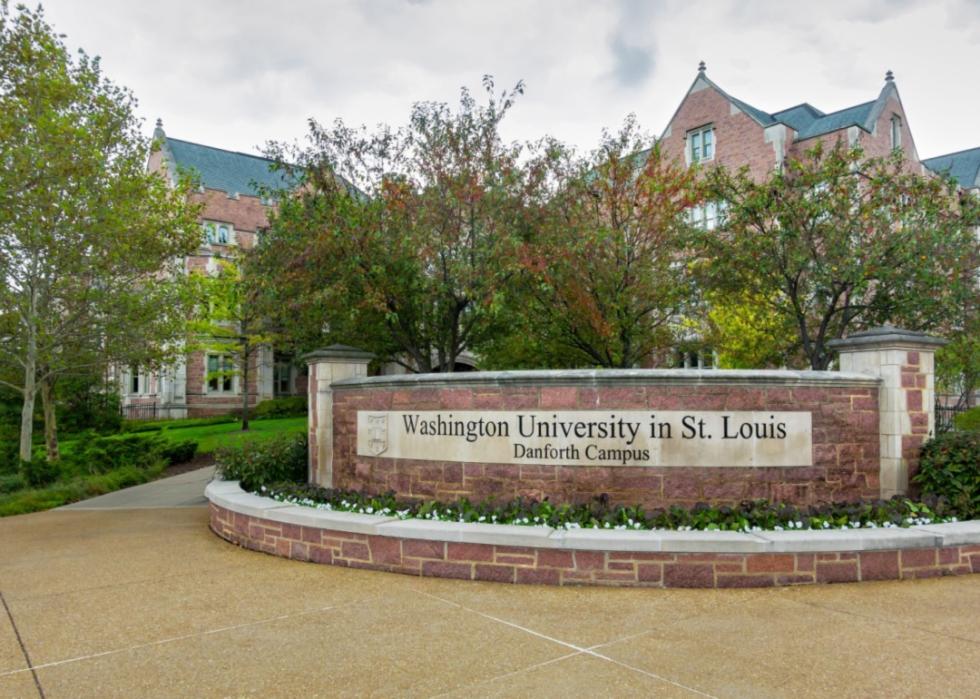
Missouri: Washington University in St. Louis
- Location: Saint Louis, MO
- Acceptance rate: 12%
- #40 hardest college to get into nationwide
- Overall Niche grade: A+
- Typical SAT range: 1500-1570
Washington University in St. Louis is known for its medicine and engineering programs. In 1976, "in St. Louis" was added to its name to avoid any confusion about its location. There have been 26 Nobel laureates in physiology, economics, and medicine affiliated with the school, nine of whom conducted their research while attending the university.
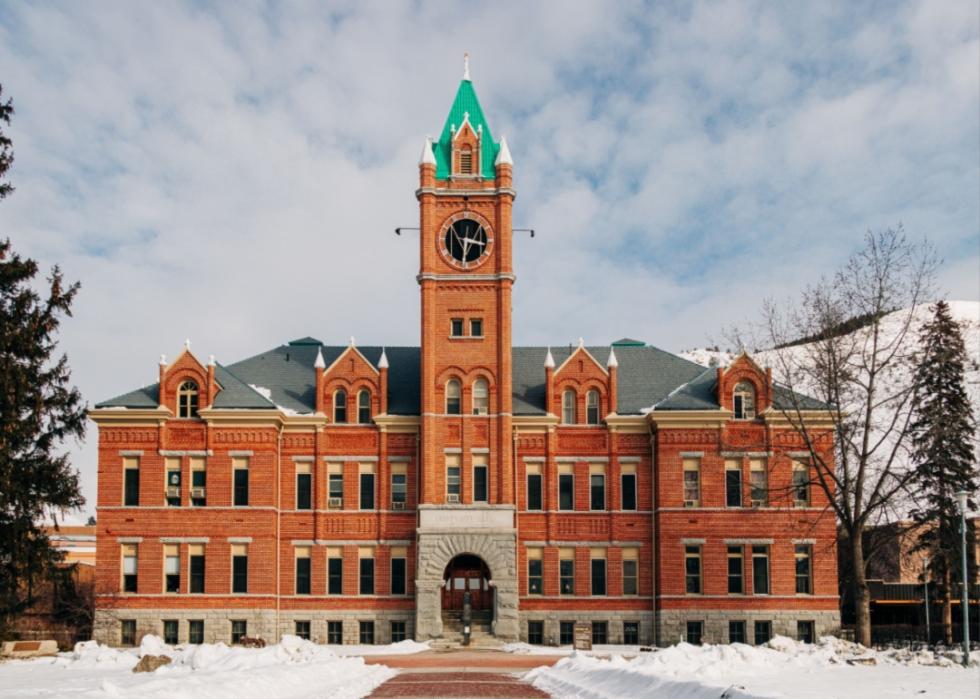
Montana: University of Montana Western
- Location: Dillon, MT
- Acceptance rate: 37%
- #125 hardest college to get into nationwide
- Overall Niche grade: B
- Typical SAT range: 890-1120
Montana Western stands out for its experiential learning model—most notably its "Experience One" system, which has students focus on one class at a time for immersive learning. This single-course model encourages deep engagement and direct faculty mentorship, with many students reporting increased comprehension and retention. The school's recent growth in enrollment reflects its appeal to students seeking an unconventional, practice-oriented undergrad experience.

Nebraska: College of Saint Mary
- Location: Omaha, NE
- Acceptance rate: 44%
- #167 hardest college to get into nationwide
- Overall Niche grade: A-
- Typical SAT range: not available
A small Catholic women's university primarily focused on health, education, and business, the College of Saint Mary also boasts a paralegal program with approval from the American Bar Association. One hundred percent of first-time, full-time students receive some form of assistance, whether through scholarships or financial aid.
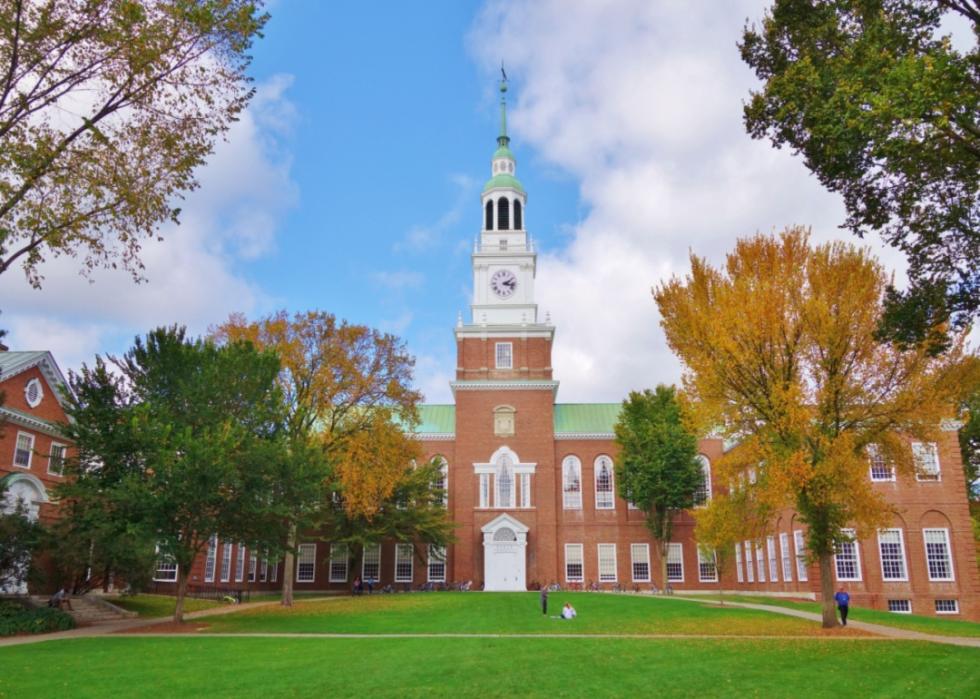
New Hampshire: Dartmouth College
- Location: Hanover, NH
- Acceptance rate: 6%
- #13 hardest college to get into nationwide
- Overall Niche grade: A+
- Typical SAT range: 1500-1570
Dartmouth College's renowned academic offerings have attracted many scientists and eventual politicians, while its athletics division has drawn several future Olympians. Notable arts and entertainment graduates include author Theodor Seuss Geisel (Dr. Seuss), poet Robert Frost, and "Grey's Anatomy" creator Shonda Rhimes. Three Dartmouth alumni have won a total of four Nobel Prizes.
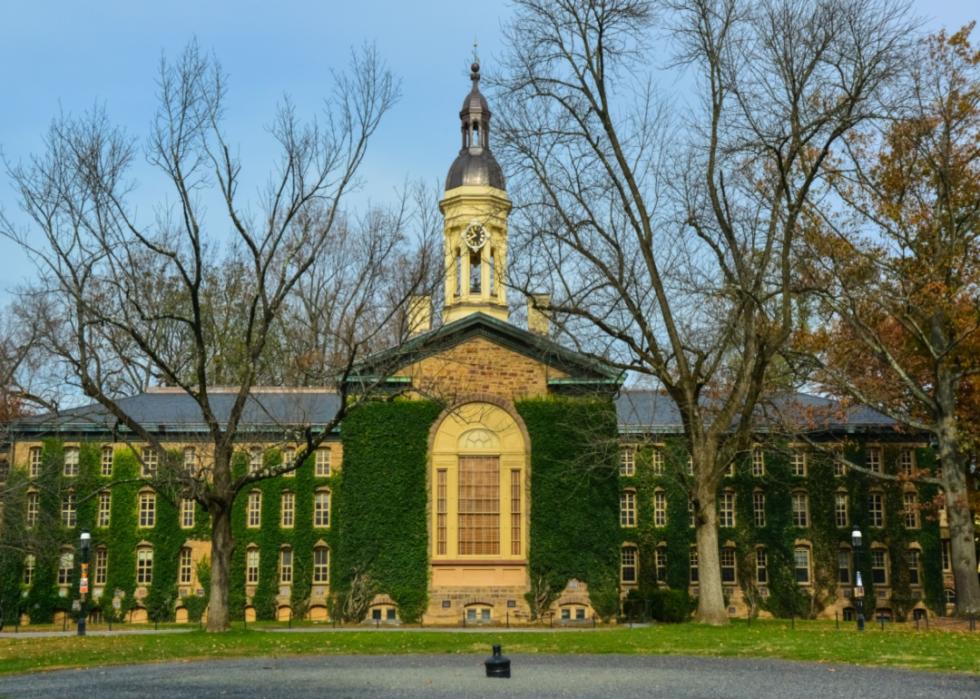
New Jersey: Princeton University
- Location: Princeton, NJ
- Acceptance rate: 4%
- #6 hardest college to get into nationwide
- Overall Niche grade: A+
- Typical SAT range: 1500-1580
One of the ten oldest institutions of higher learning in the country, Princeton University is the alma mater of groundbreaking American mathematician John Forbes Nash Jr., who was awarded the Sveriges Riksbank Prize in Economic Sciences in Memory of Alfred Nobel in 1994 (he shared the prize with two other economists). The school boasts a student-to-faculty ratio of 5:1, as well as 54 past and present professors and staff members who have won Nobel Prizes.
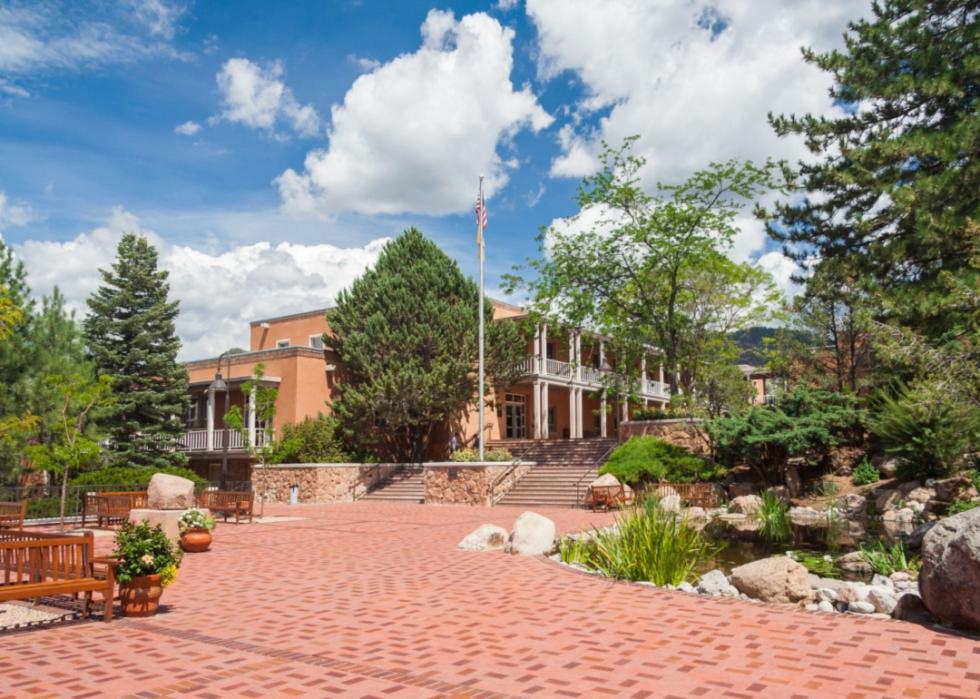
New Mexico: St. John's College - Santa Fe
- Location: Santa Fe, NM
- Acceptance rate: 49%
- #257 hardest college to get into nationwide
- Overall Niche grade: B-
- Typical SAT range: 1260-1450
St. John's College in Santa Fe is nationally renowned for its Great Books curriculum: a discussion-based program centered on reading primary texts across the humanities, sciences, and mathematics. The seminar method immerses students in close textual analysis and collaborative inquiry, fostering critical thinking and writing skills. St. John's appeals to applicants thanks to its strong track record of preparing graduates for future careers.
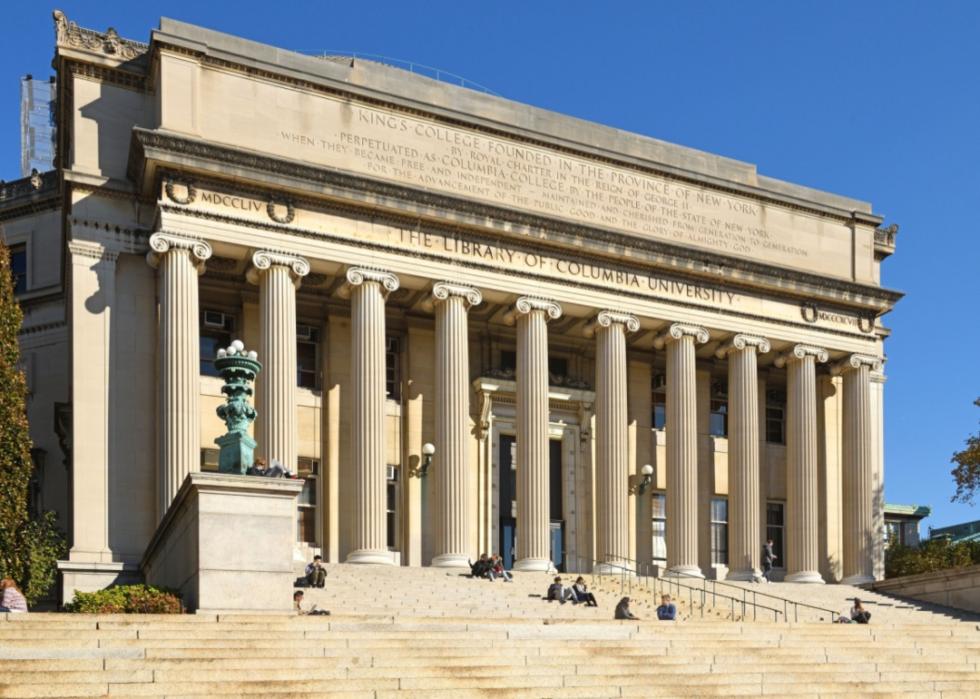
New York: Columbia University
- Location: New York, NY
- Acceptance rate: 4%
- #5 hardest college to get into nationwide
- Overall Niche grade: A+
- Typical SAT range: 1490-1570
Columbia University is one of the oldest universities in the U.S. and the oldest in New York. Founded in 1754 as King's College, several of America's Founding Fathers were among the university's earliest students and trustees, including the first Secretary of the Treasury, Alexander Hamilton, and the first Chief Justice of the United States, John Jay.
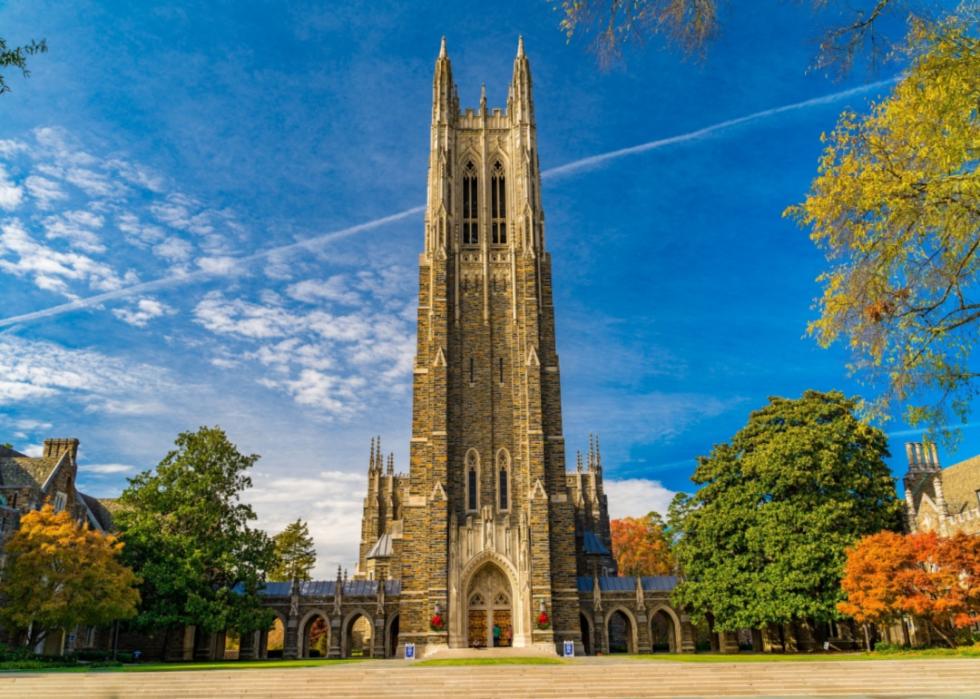
North Carolina: Duke University
- Location: Durham, NC
- Acceptance rate: 7%
- #16 hardest college to get into nationwide
- Overall Niche grade: A+
- Typical SAT range: 1510-1570
The top majors at Duke University include economics, computer science, and public policy analysis. According to Niche, only 4% of Duke students do not graduate, and the 96% that do earn a median salary of over $100,000 five years after graduating. Notable alumni include Richard Nixon, Tim Cook, and Melinda Gates.

North Dakota: Trinity Bible College
- Location: Ellendale, ND
- Acceptance rate: 36%
- #231 hardest college to get into nationwide
- Overall Niche grade: B+
- Typical SAT range: 950-1110
Trinity Bible College emphasizes Christ-centered undergraduate and graduate education with programs that combine theological study, ministry training, and professional preparation. A small campus size and close faculty mentoring foster a community where students receive individualized attention and opportunities for leadership in campus ministries. The college offers accredited degrees and practical internships that prepare graduates for a wide variety of roles.
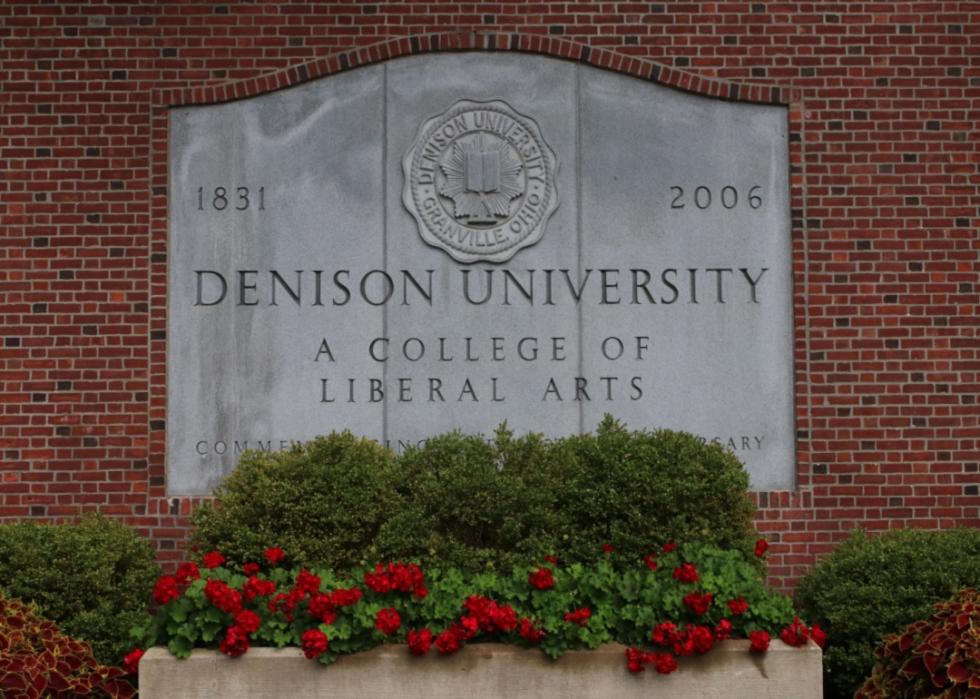
Ohio: Denison University
- Location: Granville, OH
- Acceptance rate: 17%
- #59 hardest college to get into nationwide
- Overall Niche grade: A-
- Typical SAT range: 1300-1470
Denison is a liberal-arts college noted for its strong undergraduate research, high levels of student engagement, and career services that help graduates move into meaningful employment. The school emphasizes experiential learning, internships, and strong alumni networks that assist with job placement and mentorship. Denison's investment in classroom experience and career preparation consistently earns the college high marks in national student-experience and career-readiness rankings.

Oklahoma: Randall University
- Location: Moore, OK
- Acceptance rate: 45%
- #246 hardest college to get into nationwide
- Overall Niche grade: C+
- Typical SAT range: 840-930
Randall University (formerly Hillsdale Free Will Baptist College) is a small Christian university that emphasizes faith integration, personal mentorship, and practical professional programs. The campus combines liberal-arts foundations with vocational prep in areas such as business, ministry, and education. Its small size supports close student-faculty relationships and campus activities that reinforce a faith-based community.
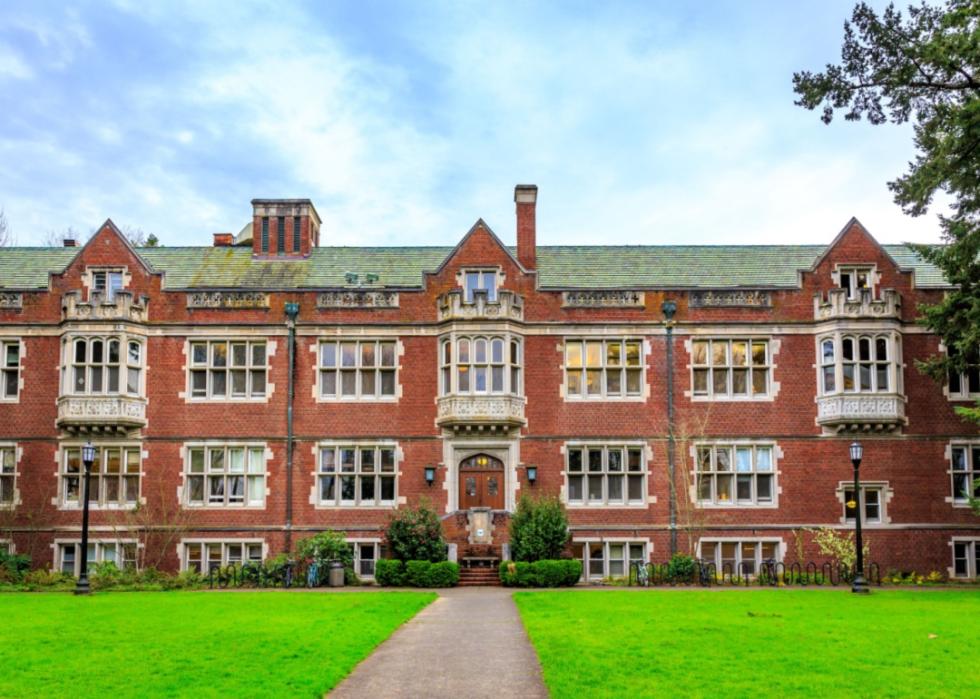
Oregon: Reed College
- Location: Portland, OR
- Acceptance rate: 26%
- #89 hardest college to get into nationwide
- Overall Niche grade: A-
- Typical SAT range: 1300-1510
Reed College is a small school bisected by a forested canyon nature preserve, which the community cleans up annually as part of restoration efforts. While letter grades are used, their importance isn't emphasized; there is no honor roll or dean's list at the university.
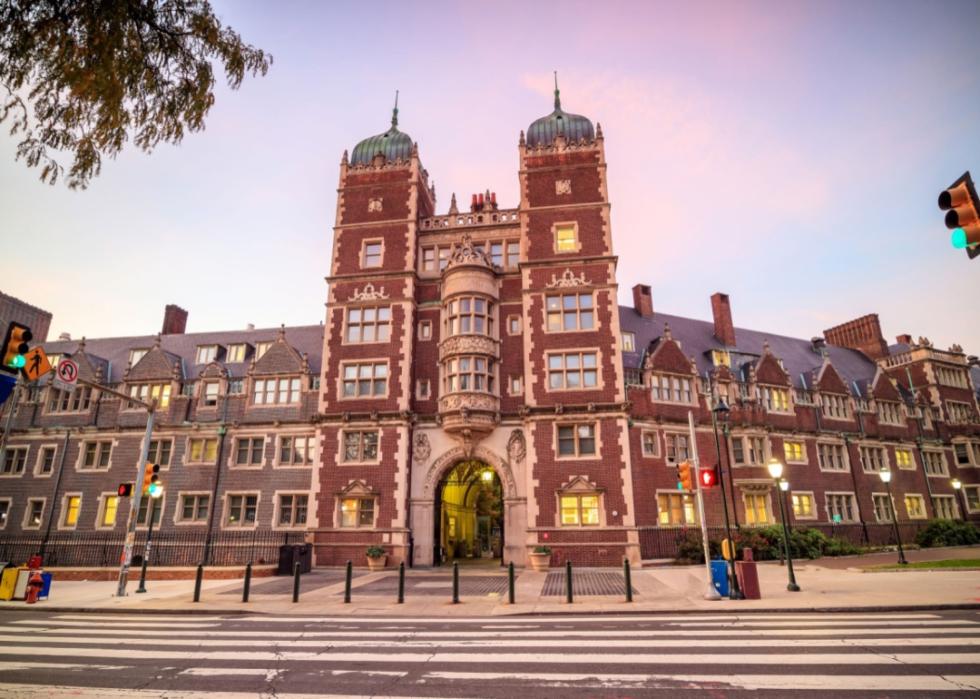
Pennsylvania: University of Pennsylvania
- Location: Philadelphia, PA
- Acceptance rate: 6%
- #12 hardest college to get into nationwide
- Overall Niche grade: A+
- Typical SAT range: 1500-1570
According to Forbes, a bachelor's degree from Penn's Wharton School of Business "is more popular among billionaires than any other college diploma." The Perelman School of Medicine is North America's first established school of medicine, and Wharton is the first collegiate business school.
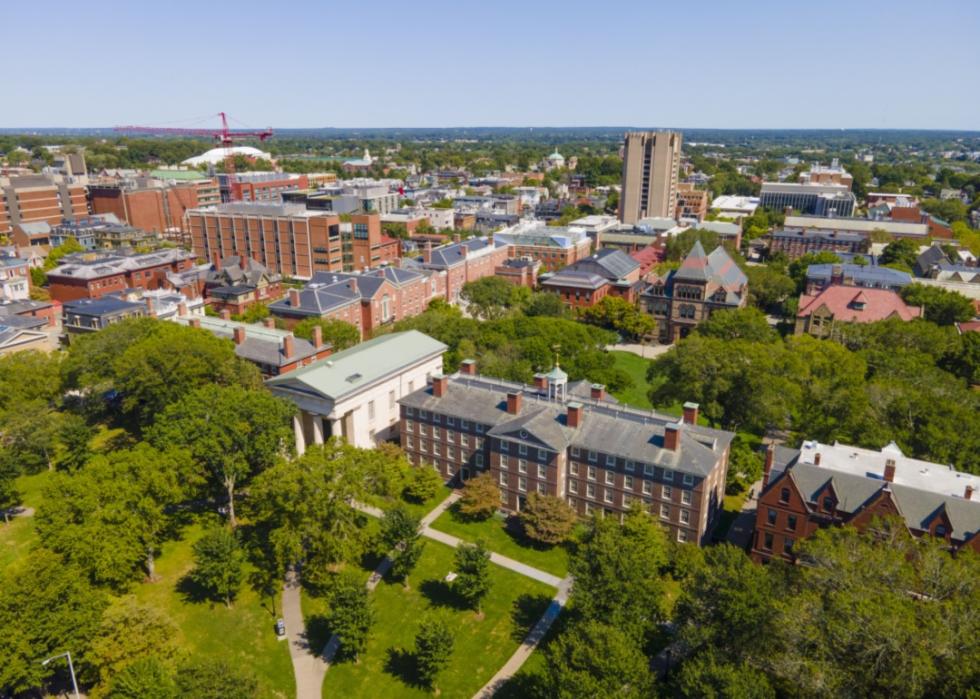
Rhode Island: Brown University
- Location: Providence, RI
- Acceptance rate: 5%
- #10 hardest college to get into nationwide
- Overall Niche grade: A+
- Typical SAT range: 1500-1570
Ranked by Niche as #6 among the colleges with the best professors in America, Brown University is situated in a richly historic, urban setting complete with colonial-era buildings. Biology, economics, and computer science are the most popular majors at Brown, where the student-to-faculty ratio is 6:1. Notable alumni include Janet Yellen, Ted Turner, and John D. Rockefeller, Jr.

South Carolina: Allen University
- Location: Columbia, SC
- Acceptance rate: 33%
- #111 hardest college to get into nationwide
- Overall Niche grade: B-
- Typical SAT range: not available
Allen University is a historically Black university with a mission to develop scholars and community leaders through personalized instruction, civic engagement, and programs geared toward local workforce needs. That means education, business, and health-related fields to serve the Columbia, South Carolina region. The university emphasizes small classes and its impressive historical legacy. Allen University has been praised for its efforts to raise academic quality and visibility among HBCUs.

South Dakota: Mount Marty University
- Location: Yankton, SD
- Acceptance rate: 48%
- #192 hardest college to get into nationwide
- Overall Niche grade: B
- Typical SAT range: 810-1050
Mount Marty is a Catholic liberal-arts university that combines faith formation with career-focused programs and experiential learning in nursing, education, and business. The university's steady enrollment growth and emphasis on student success reflect an investment in hands-on training and community partnerships. Mount Marty's small classes and values-centered campus culture emphasize mentorship and civic engagement.
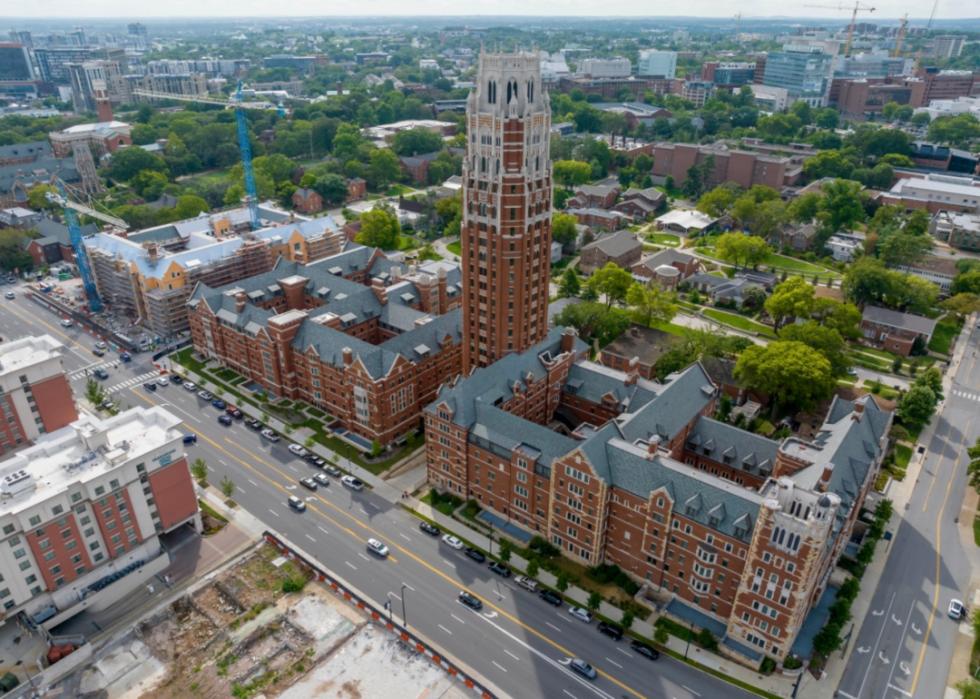
Tennessee: Vanderbilt University
- Location: Nashville, TN
- Acceptance rate: 6%
- #14 hardest college to get into nationwide
- Overall Niche grade: A+
- Typical SAT range: 1510-1560
Vanderbilt University is situated on a 330-acre campus smack dab in the heart of Nashville. An on-site arboretum features more than 6,000 trees and shrubs (190 different species). The most common majors at the school are economics, social science research methods, and liberal arts and humanities. Famous alumni include former Vice President Al Gore, author James Patterson, and several well-known athletes.
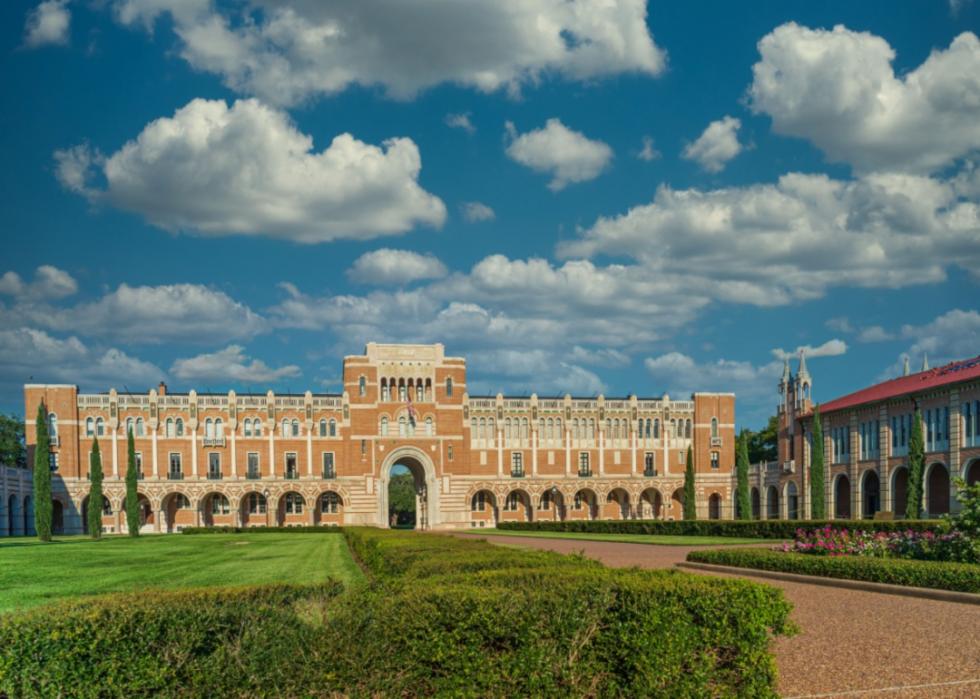
Texas: Rice University
- Location: Houston, TX
- Acceptance rate: 8%
- #21 hardest college to get into nationwide
- Overall Niche grade: A+
- Typical SAT range: 1500-1570
With a median class size of about 15 and a student-to-faculty ratio of 6:1, Rice University offers over 50 undergraduate majors, the most popular being economics, biology, and information science. The school also supports many research institutes and centers across a wide variety of subjects, including the Rice Space Institute, which counts multiple NASA astronauts as alumni.
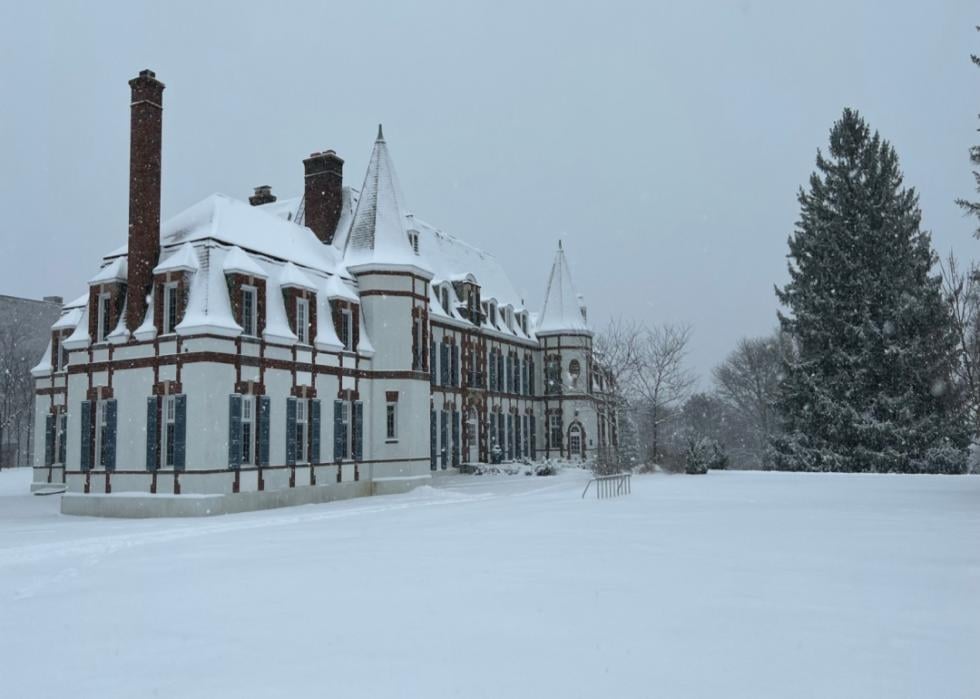
Vermont: Middlebury College
- Location: Middlebury, VT
- Acceptance rate: 10%
- #32 hardest college to get into nationwide
- Overall Niche grade: A+
- Typical SAT range: 1430-1550
Middlebury College is a rural school located in the Champlain Valley adjacent to the Green Mountains. The school offers summer courses in 13 different languages, including Portuguese and Russian. Two Middlebury students founded the International Quidditch Association, based on the sport from the "Harry Potter" novels and films.
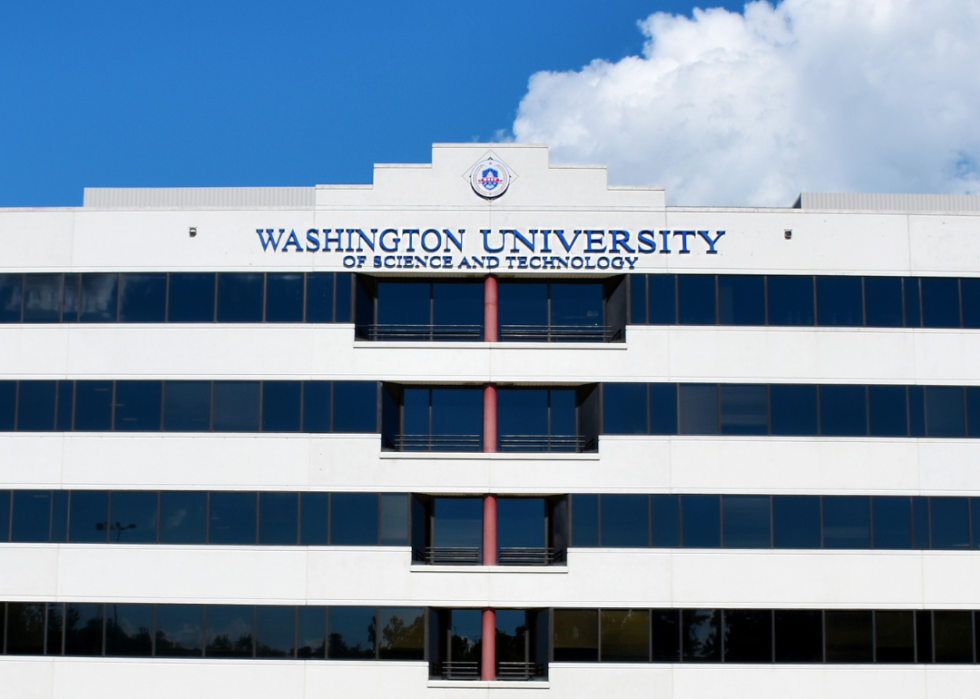
Virginia: Washington University of Science and Technology
- Location: Alexandria, VA
- Acceptance rate: 11%
- #37 hardest college to get into nationwide
- Overall Niche grade: unavailable
- Typical SAT range: not available
Washington University of Science and Technology positions itself as a specialized provider of online and traditional graduate programs with a focus on career-oriented learning and flexibility for working students. The institution promotes professional development with online delivery models that appeal to students seeking graduate credentials without full-time campus attendance. For those prioritizing flexible graduate studies, WUST is hard to beat.
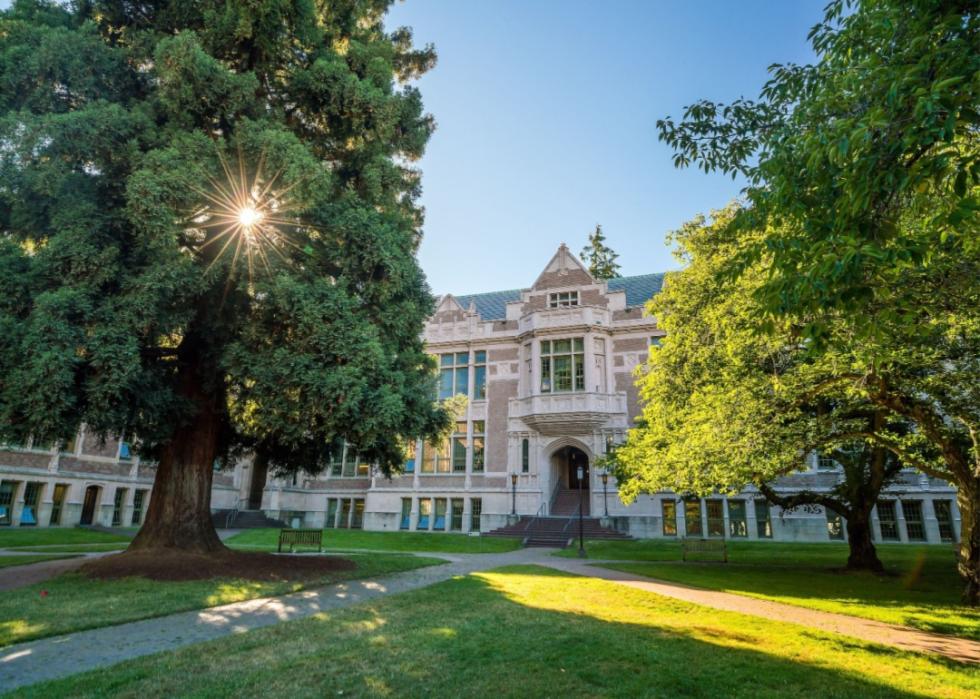
Washington: University of Washington
- Location: Seattle, WA
- Acceptance rate: 43%
- #153 hardest college to get into nationwide
- Overall Niche grade: A+
- Typical SAT range: not available
The University of Washington is a top public research university with extensive graduate and professional schools and a strong record of technology transfer and public engagement. UW's research figures show nearly $1.8 billion in sponsored grants and contracts, supporting a broad range of faculty research and undergraduate research opportunities. Its location in Seattle provides deep links to the technology, healthcare, and global trade sectors, creating exceptional internship and employment pipelines for students.
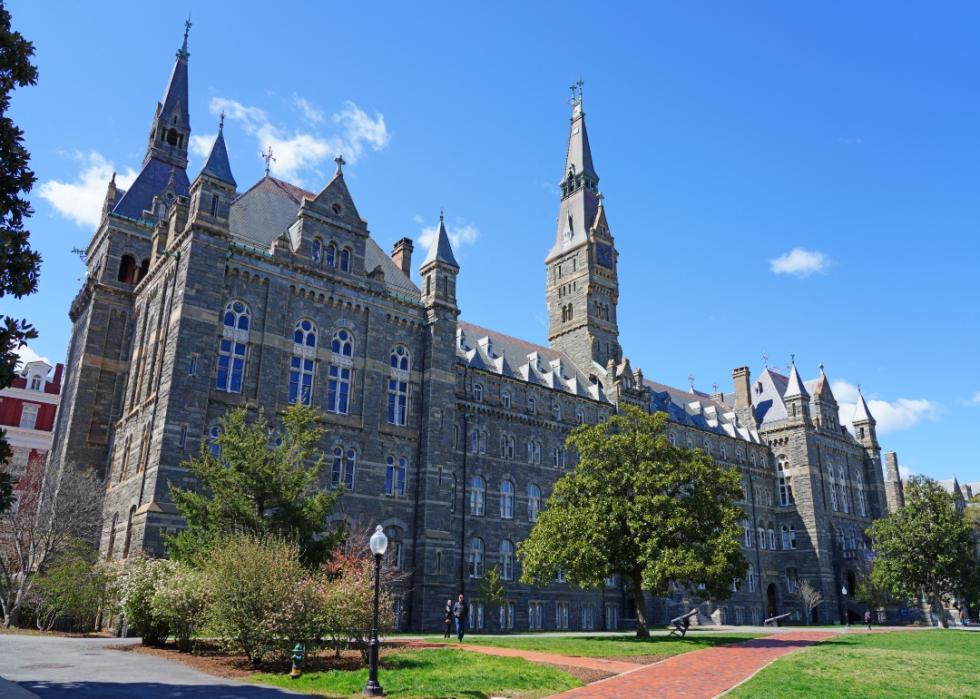
Washington DC: Georgetown University
- Location: Washington D.C.
- Acceptance rate: 13%
- #47 hardest college to get into nationwide
- Overall Niche grade: A+
- Typical SAT range: 1390-1550
Georgetown combines a rigorous curriculum with a Jesuit identity that highlights public service, ethics, and international affairs—strengths reflected in its highly regarded programs in international relations, law, and public policy. The university's location in Washington, D.C. gives students direct access to internships, government agencies, NGOs, and international organizations for hands-on learning. Beyond that, Georgetown's professional schools and alumni network provide strong career placement and mentorship pipelines.
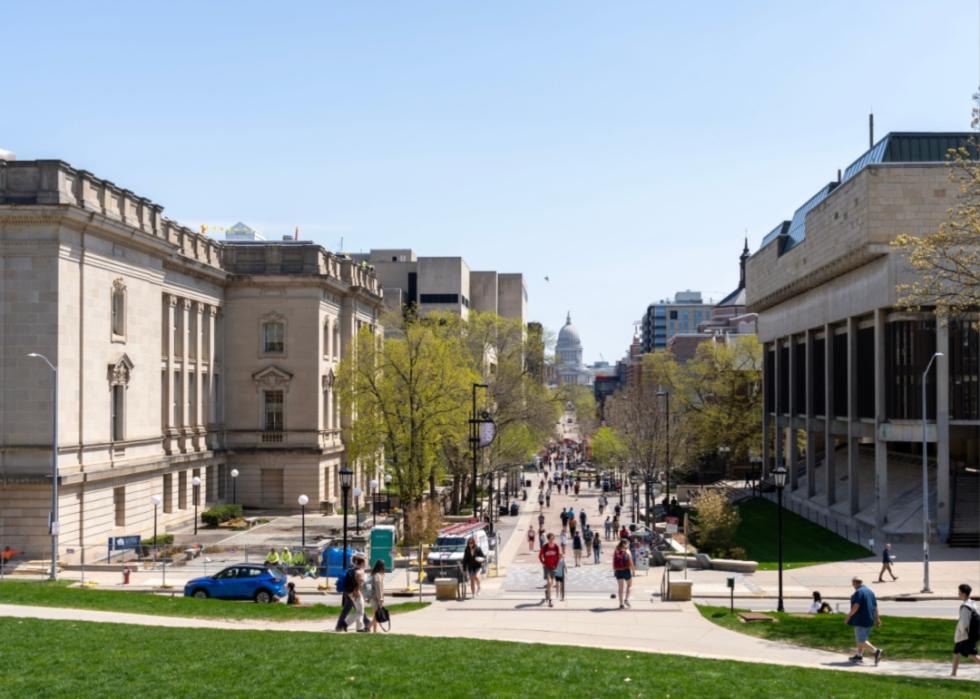
Wisconsin: University of Wisconsin-Madison
- Location: Madison, WI
- Acceptance rate: 43%
- #161 hardest college to get into nationwide
- Overall Niche grade: A+
- Typical SAT range: 1360-1510
The University of Wisconsin–Madison is a flagship land-grant research university with longstanding strengths in public-service outreach (the "Wisconsin Idea") and a broad spectrum of graduate and professional programs. The campus contributes substantial economic impact statewide while supporting thousands of sponsored research awards and a high level of undergraduate research participation. UW–Madison's service mission and extension programs connect students to community needs across agriculture, health, and education.
Additional writing and story editing by Cynthia Rebolledo. Copy editing by Meg Shields.


